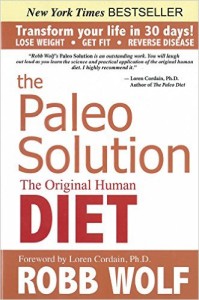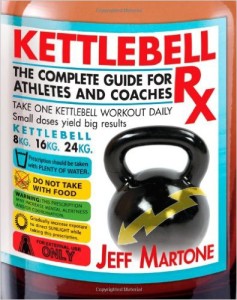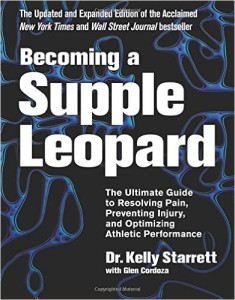Bottom Line Up Front: I routinely get asked by people what they can do to improve in a variety of physical fitness areas – usually it’s how to eat better, how to get stronger, or how to improve mobility. Instead of giving them miscellaneous tips, tricks, websites, or general guidance that isn’t truly enough, I recommend literature. Here are my top physical fitness books.

This isn’t a revision of my recommended books list; it is a sub-category and will get into more detail. Eventually it may make more sense to me to combine these posts, but for now I am going to make this its own post. I will break out the categories below, explain who should get these books, what they will give you, and why it’s worth it.
Short Intro Rant
Before we get into specifics, I want to say up front that the tendency for Americans (maybe all people) is to look for the quick fix. They rarely want to invest in the effort of spending money and reading a book. I can’t tell you how many times family and friends have started to ask me questions about how to lose fat, get stronger, get bigger, feel better, etc. I try to recommend books, but what they really want is for me to boil it down to the basics, like in 5 minutes or less, so they can get right to it and skip the background work.
When you do this, you completely miss all the understanding that goes into the advice. I can show you my rules of nutrition, but they are very simplified and don’t really explain to you why I came to believe those rules. I can tell you to just eat real food, avoid anything in a bag or box, and limit carbohydrates early in the day. It took me two decades of experimentation and reading to come to those conclusions that have been useful for me. When an author puts out a book, they get to tell you all the details in the right order so it makes the most sense. You leave with not only the knowledge of what to do but you now understand why and how. Reading a good nutrition book is so much better than looking for “diets” on the Internet. If you are the kind of person who won’t even read a book about your physical health, it must not be that important to you. I purchased 5 books myself in recent past for family and friends. They knew they needed to change their diet and lifestyle. None of them has read the books all the way through despite my telling them that this book could change their life. Needless to say, I am a lot less interested in their lack of dietary success.
So here we go with the recommended books. Do yourself a favor and invest some time and money, which is truly a small amount for such important goals.
If You Want to Learn How to Eat Properly (to perform better, lose fat, gain muscle, etc.)
Read Robb Wolf’s The Paleo Solution.
 This book gets into the background of the Paleo diet and defines why it’s the right way to approach eating (and life). Don’t get scared off by the word “Paleo” if you are somehow afraid of this word or feel it is cult-ish. The basic idea is to eat real food, sleep and exercise properly. Robb gets into details about macronutrients (carbs, protein, fat) as well as micronutrients (vitamins and minerals). He talks sleep and exercise too, not just about food. This book is much more than a meal plan. It is a lifestyle book. I wish I had this 20 years ago. I believe almost every word in this because I figured it all out through trial and error or reading hundreds of articles. I could have saved myself many years of thinking a bagel, low fat cereal, and toast with butter spray was healthy or that steak was bad for you.
This book gets into the background of the Paleo diet and defines why it’s the right way to approach eating (and life). Don’t get scared off by the word “Paleo” if you are somehow afraid of this word or feel it is cult-ish. The basic idea is to eat real food, sleep and exercise properly. Robb gets into details about macronutrients (carbs, protein, fat) as well as micronutrients (vitamins and minerals). He talks sleep and exercise too, not just about food. This book is much more than a meal plan. It is a lifestyle book. I wish I had this 20 years ago. I believe almost every word in this because I figured it all out through trial and error or reading hundreds of articles. I could have saved myself many years of thinking a bagel, low fat cereal, and toast with butter spray was healthy or that steak was bad for you.
Honorable Mention: Mark Sisson’s The Primal Blueprint.
Essentially this is Mark’s take on the same things Robb hits in his book. It covers the whole Primal lifestyle – food, exercise, sleep, etc. It is a tough call to recommend The Paleo Solution over this book. You won’t go wrong with either.
If You Want to Get Bigger and/or Stronger
Read Mark Rippetoe’s Starting Strength, 3rd Edition.
 This book will get you the basics of why you should lift heavy things, how to put them together in a program, and how to perform the lifts properly. While you can find all kinds of strength programs out there, once again, those are for advanced athletes who understand the basics and have been lifting weights for yours. This book is useful for the beginner and the advanced athlete.
This book will get you the basics of why you should lift heavy things, how to put them together in a program, and how to perform the lifts properly. While you can find all kinds of strength programs out there, once again, those are for advanced athletes who understand the basics and have been lifting weights for yours. This book is useful for the beginner and the advanced athlete.
Honorable Mention: Jim Wendler’s 5/3/1: The Simplest and Most Effective Training System for Raw Strength.
This book is the in depth explanation of Jim Wendler’s famous 5/3/1 system. It is pretty easy to follow and this books show you how to use this program for varying goals. This is less foundational than Starting Strength in my opinion, slightly more advanced. I would recommend this to someone who has been lifting weights for a while, feels comfortable with the basics, but is looking for a specific programming book.
If You Want to Get Into Kettlebell Training
Read Jeff Martone’s Kettlebell Rx: The Complete Guide for Athletes and Coaches.
 Jeff Martone is a stud and his books outlines everything you’d need to know about the kettlebell including how to use it, basic techniques, advanced techniques, and program design.
Jeff Martone is a stud and his books outlines everything you’d need to know about the kettlebell including how to use it, basic techniques, advanced techniques, and program design.
If You Want to Improve Mobility/Flexibility/Recovery/Learn How to Use a Foam Roller
Read Dr. Kelly Starrett’s Becoming a Supple Leopard 2nd Edition: The Ultimate Guide to Resolving Pain, Preventing Injury, and Optimizing Athletic Performance.
 This book is so useful it is ridiculous. It is a bible of information covering the entire body with very specific recommendations using a variety of implements (foam roller, lacrosse ball, bands, etc.). There are only a few pages to actually read as in most of the book isn’t narrative. You can almost skip any reading, look for the demonstrations, and try them out. It is a great reference to have handy for when something hurts or when your mobility in an area needs some work. Don’t think twice about spending the cash for the hardcover. It is the only way to do it. They just released the second version in May 2015 with updates from the wildly successful first version.
This book is so useful it is ridiculous. It is a bible of information covering the entire body with very specific recommendations using a variety of implements (foam roller, lacrosse ball, bands, etc.). There are only a few pages to actually read as in most of the book isn’t narrative. You can almost skip any reading, look for the demonstrations, and try them out. It is a great reference to have handy for when something hurts or when your mobility in an area needs some work. Don’t think twice about spending the cash for the hardcover. It is the only way to do it. They just released the second version in May 2015 with updates from the wildly successful first version.
Note that you may also see a book called by Kelly Starrett called Ready to Run: Unlocking Your Potential to Run Naturally. This book is almost a mini Supple Leopard with more focus on the lower body, running, prepping to run, recovering from running. I would get Supple Leopard over this for sure. I only mentioned it because you may see it and get confused as to which to get. If you are a real runner (not like you run sometimes but you are a runner), I would get this one too. Redundancy but worth it.
Honorable Mention: Jill Miller’s The Roll Model: A Step-by-Step Guide to Erase Pain, Improve Mobility, and Live Better in Your Body.
I go back and forth between this book and Supple Leopard. It is so good. Jill gets into great detail with using her Yoga Tune-up Balls in the same way Kelly does in Supple Leopard with other implements. If you are serious about mobility, you will get both The Roll Model and Supple Leopard.
Pro Tip: If get the Roll Model book, I’d get this whole kit to go with it. It is all the tools you will need plus a DVD showing everything. Yes, it’s almost $100. It is so worth it. I tried to use other implements (tennis balls, softballs, lacross balls), but the Yoga Tune-up brand are actually worth the money. The DVD is very good (it also stars Kelly Starrett).
Conclusion
It took me many years to realize books were the way to go. I never got serious about mobility until I got Supple Leopard and The Roll Model. I had a foam roller and lacrosse ball kind of sitting there for years because I knew I needed those tools, but I didn’t really have enough information to make it part of my lifestyle. If you are in this situation or you know someone who is, do them a favor and share this post with them. Enjoy!
QUESTION: Do you own any of these books? What did you think? Have you read another book that covers these topics that you would recommend? Post thoughts to comments.
